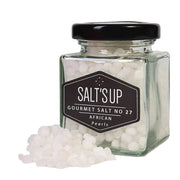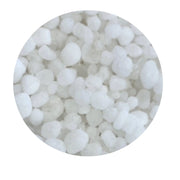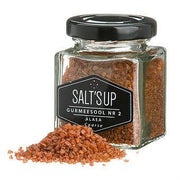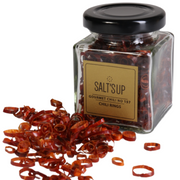KALAHARI fine salt
Kalahari Desert Salt
This salt is harvested in an area that has never been inhabited or used for industry. In the pristine Kalahari Desert of South Africa, three underground streams converge on a layer of pure salt deposits untouched by man. The pure water dissolves the salt and creates a brine solution that is then gently dried by the desert Sun. What remains are the pure, mineral rich crystals of Kalahari Desert Salt.
A whole, nutritional salt, Kalahari Desert Salt contains vital minerals and trace elements, and is especially high in potassium, magnesium and sulfur.
You will undoubtedly notice that Kalahari tastes far better than other salts. It is ideal use with any dish, but mostly we recommend it to boost flavors of meat dishes.
Produced in South Africa.
Table salt
The flavor of Kalahari is solid and straightforward.
Lower in sodium than regular salt.
Good with seafood and steak.
100g / 3.53oz jar








